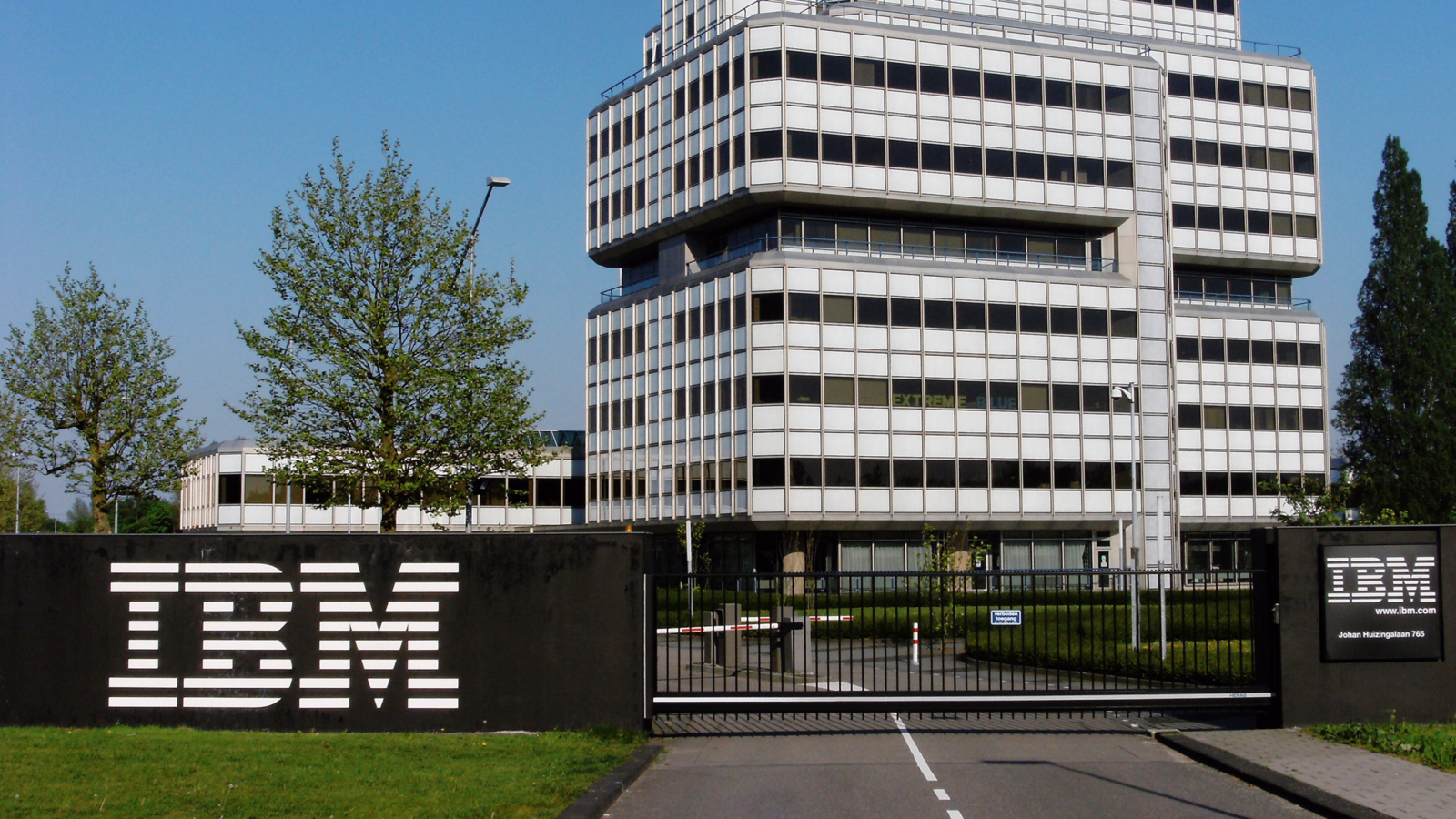Good morning.
Australian airline Qantas accidentally eliminated distinctions based on class, selling hundreds of passengers first-class tickets for 85% less than their standard value. The seats, which are more like private rooms, typically cost anywhere from $13,000 to $20,000, but 300 fliers managed to snag round-trip tickets for just $3,390 last week. Qantas blamed the mistake on a computer glitch and, unfortunately, rectified the situation. The airline said those passengers will not get their first-class seats but instead be reassigned in business class. That’s still copping it sweet, as the Aussies might say.
IBM Shutters Its China R&D Division

It’s another day in the Long March out of China by Western firms.
This time around, it’s IBM’s turn. On Monday, the tech giant announced it would be shutting down its Chinese research and development team, shifting some operations to other international locations and affecting around 1,000 employees in the process. At this point, it would have been more surprising had it stayed.
Made in China, Stayed in China
It’s not just Big Tech facing a great wall to commerce in China. The world’s 10 largest buyout firms have executed just five deals within the confines of the Middle Kingdom this year, according to a recent Financial Times analysis of Dealogic data. That’s well down from the roughly 30-per-year pace seen through much of the last decade. Geopolitical tensions, regulatory unpredictability, and economic headwinds have turned a “gold rush” into “more like panning for gold with a magnifying glass and tweezers,” Kher Sheng Lee, Asia-Pacific co-head for the Alternative Investment Management Association, told the FT.
Still, the sun may be setting faster for tech firms than any other industry. A Beijing-led campaign to “Delete America” from the tech infrastructure of major economic sectors has crushed revenue streams for American tech firms. Meanwhile, a massive increase in capital expenditures among China-based tech firms has made the transition all the more possible: Baidu, Tencent, and Alibaba have each doubled their capex compared to a year ago, per another recent FT analysis, with a focus on artificial intelligence.
That’s leaving firms like IBM with little room to grow — and, therefore, plenty of reason to leave:
- Last year, IBM reported that its revenue in China had fallen nearly 20%, compared to an overall increase of over 2% in the rest of the world. In 2022, the gap was even bigger, with revenue falling nearly 23% in China compared to a global increase of 5.5%.
- Still, the Asia-Pacific region as a whole contributed nearly 12% of IBM’s $62 billion in revenue last year, and many of the eliminated roles will be redistributed in the region, particularly in India, sources told The Wall Street Journal. When one growth market dies, another takes its place.
IBM had already shuttered a separate China-based R&D division back in 2021. The firm still has around 7,500 employees in the country, according to Chinese corporate records seen by the FT.
Chips on the Table: Of course, American policy has played a significant role in Silicon Valley’s China retreat, with strict export controls on advanced AI chips placing a literal cap on US business. But where there’s a will, there’s a way. According to a WSJ investigation published Monday, Chinese firms have found a workaround to the policies by paying for access to offshore gray market server farms powered by banned Western AI chips. “Delete America,” it seems, has loopholes.
Meet Your Personal Board of Directors

Being a leader is demanding. When you have pivotal decisions to make on behalf of your company, who can you turn to for trusted advice?
You need a personal board of directors — a group of peers as smart as you are — who can offer grounded, actionable advice. But building a network of high-caliber professionals normally takes years of cultivation.
Sidebar is a highly curated community of senior leaders who are ready to work through your professional challenges with you. When you join Sidebar, you are matched with a peer group designed specifically for your needs, who can help you unlock massive career growth. And Sidebar’s small groups are led by world-class facilitators, so you’re never wasting time.
Thousands of leaders from companies like Microsoft, Stripe, Gusto, and Canva already rely on Sidebar. And get this – a staggering 93% of users say Sidebar has been a game-changer in their professional path.
The most successful people surround themselves with incredible talent — join Sidebar today.
Exxon Sees Oil Demand in 2050 Unchanged, Testing Net Zero Goals
When you wake up on Feb. 2, 2050 to check whether Punxsutawney Phil sees his shadow, it’ll also be the dawn of an oil industry “Groundhog Day.”
Multinational energy giant ExxonMobil forecast Monday that oil demand will remain above 100 million barrels per day at the mid-century point, roughly the same as current levels. That’s enough to worry Bill Murray’s cynical “Groundhog Day” weatherman for meteorological and time-loop reasons.
Will Tech Save Us?
According to the International Energy Agency, oil demand needs to drop 75% to 24 million barrels per day by 2050 if humans are to limit global warming to 1.5 degrees Celsius (2.7 degrees Fahrenheit) above pre-industrial levels, the goal laid out in the 2016 Paris Climate Accords.
But Exxon says as the world’s population increases — from 8 billion today to an estimated 10 billion in 2050 — current innovations like electric vehicles won’t be enough to change the course of oil demand. The oil giant projects 67% of the world’s energy in 2050 will come from oil, natural gas, and coal compared to last year, when it was… 68%. Greenhouse gas emissions will fall from 2030, thanks to a near-tripling of renewable energy output, down 25% by 2050, but that’s not nearly enough to deter major climate change:
- Commercial transportation and industrial activity, especially difficult to decarbonize, will cause half of the world’s emissions in 2050, Exxon said, pointing to the future advancement of tech like carbon capture and biofuels as potential means to change course.
- However, a report last month by the Pulitzer Center detailed how oil giants, including Exxon, touted carbon capture technology before US legislators in advance of a major tax credit being passed only to doubt the tech in disclosures — Exxon said the report relied on “false narratives.”
It should be noted that Exxon’s forecasts are notably gloomier than European rival BP, which expects oil demand to fall 25% to 75 million barrels per day (still not good enough to meet the goals of the Paris Accords).
Catastrophe: The oil giant’s economic head told Bloomberg it would be “catastrophic” if new investments aren’t made in oil — without them, the firm believes supply could drop 70% to 30 million barrels per day by 2030, which would devastate the global economy by driving up prices.
Economic Strains Starting to Hit Wealthier Americans, Survey Finds
The US may be less egalitarian than before, but everyone still loves a bargain.
In its August consumer survey, Mizuho found that both low- and high-income Americans alike are trying to get as thrifty as possible, which means eating out less and searching for discounts wherever they can.
The Price to Be an American
It’s not news that things are more expensive. A Fed rate cut may be on the way next month, but gas is averaging $3.35 a gallon, energy bills continue to climb, and the only thing worthwhile at fast-food joints anymore is the $5 value meal.
The struggle is real for low-income consumers who earn less than $50,000 a year and make up 22% of US households, but it’s also showing signs of spreading to wealthier echelons:
- About 60% of those polled in Mizuho’s survey said they reduced spending at restaurants compared to six months ago, and they’ll likely continue that trend for the next six months. Almost a quarter of respondents said they’ve depleted their savings.
- Higher-income earners are still spending solidly — however, Mizuho did note that strikingly high numbers reported elevated credit balances and some signs for potentially tighter spending through the year-end. “Nearly half of consumers with incomes up to $150,000 are already spending cautiously, despite having ‘sufficient’ levels of savings,” the survey said.
And that frugality appears to be in line with trends at Walmart and Target — discount megastores that are starting to attract a lot more wealthy customers.
10 Items or Less: Food costs are so controversial these days that Vice President Kamala Harris has made it part of her economic platform in this year’s presidential election, promising to crack down on price-gouging grocers. However, many have been quick to criticize Harris, arguing that high food prices aren’t the result of corporate greed but rather just what it takes to keep the lights on. Back in July, New York Federal Reserve advisor Thomas Klitgaard said high food costs are likely the product of a surge in agricultural and livestock prices and rising wages for grocery store workers. No matter the reason, just let us know when eggs are on sale again.
Tied to a Phone Plan You Don’t Like? Break free with Visible. Experience unlimited everything starting at $20/month. Enjoy reliable 5G and 4G coverage with no hidden fees or obligations, so you have freedom to phone however you like. Get Visible today and enjoy the flexibility and savings you deserve. Use code CHAMP to get 24 months of Visible for just $20/month.
Extra Upside
- Extra Guac: Labor agency says Chipotle denied raises to unionized employees.
- RoboCop: Police use AI chatbots to write up crime reports.
- Speeding Ticket: Uber was fined €290 million for breaching the European Union’s General Data Protection Regulation.

